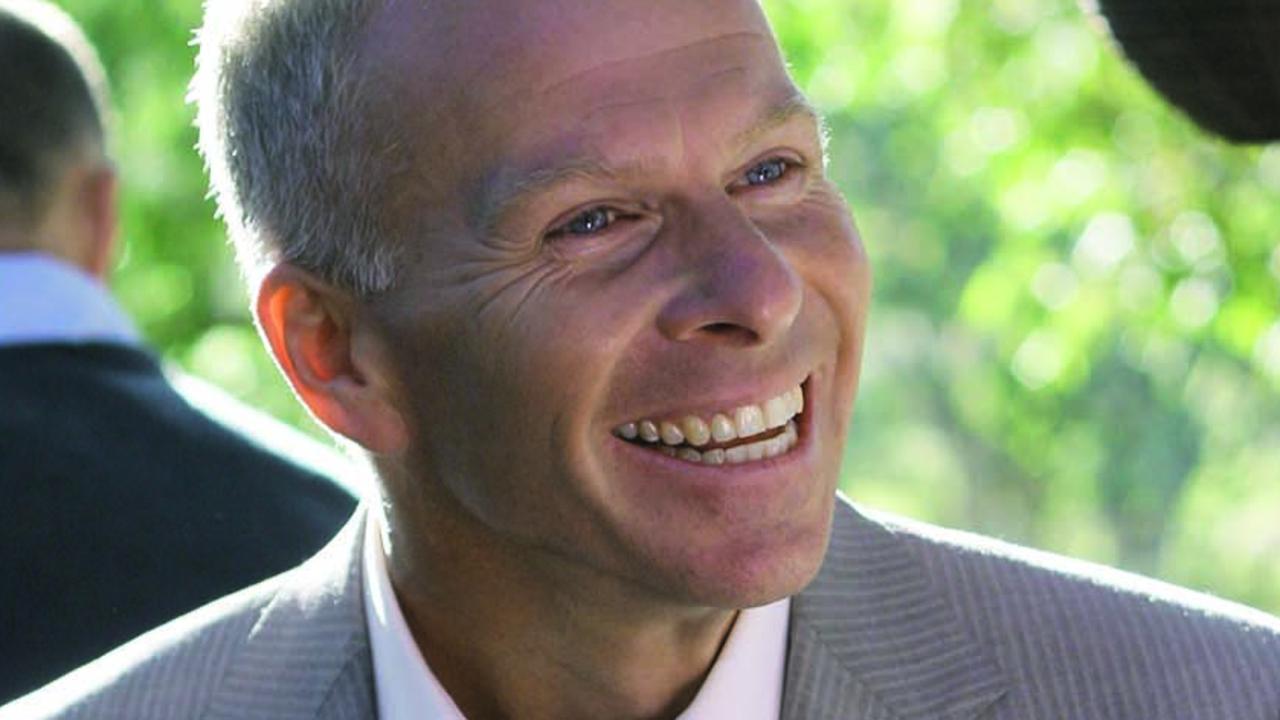Shocked to the core
WHEN police arrived at the yellow brick units in the central Queensland town of Brandon about 2:50am on June 12, Antonio Galeano was in a rage.
WHEN police arrived at the yellow brick units in the central Queensland town of Brandon about 2:50am on June 12, Antonio Galeano was in a rage.
The two young constables, one just a few months out of the academy, had been dispatched to the suburb just south of Townsville after a triple-0 call minutes earlier from a screaming woman. His girlfriend had just got away, cowering in a neighbour's place and terrified that Galeano, 39, who had flung her across the room by her hair, was coming and couldn't be stopped.
Galeano was well known to police as an addict with a taste for methamphetamine, and someone of whom to be especially wary. A year ago he had been arrested on weapons charges, including possession of guns and a samurai sword.
This father of one had a history of mental illness and had somehow walked out of the Townsville hospital hours earlier, after having been taken there by police the previous day for a mental health assessment.
Doctors had cleared him.
An overnight stay was apparently enough to free the demons that led him on a frolic among highway traffic. He was too fast for police. The chase ended hours later when he was found naked, lying starfish-like on the busy railway tracks that lead into the industrial hub of Townsville.
Galeano had a death wish. Police reported he had said as much.
So it was hardly surprising what confronted the two officers when they went to the unit that Friday morning. Galeano, according to police, was semi-naked, bloodied - either from self-harm or through wounds from his destruction of the unit - and wielding a metal bar.
But what happened next stunned Galeano and an Australian community demanding protection from the ever increasing drug- fuelled violence breaking out across suburbia.
Faced with the raging bull of a man, the two officers - a senior constable with seven years experience and his female rookie partner - first tried talking, then used capsicum spray. It made no difference, according to police. The senior constable, waiting for back-up, then pulled out his Taser.
Galeano was dead within minutes, handcuffed and lifeless on the bathroom floor where he had been cornered.
It was Australia's third Taser-related death.
A Northern Territory man died just two months ago after being shocked several times by police called to a violent domestic dispute.
And like him, Galeano, according to police commissioner Bob Atkinson hours later, had been shocked just "two or three times" before he spoke briefly and then dropped to the floor. But it wasn't the truth.
As revealed in The Australian last Thursday, data downloaded from the controversial stun gun pointed to a more disturbing reality: he had been shocked 28 times by the 50,000 volt weapon. Police were speechless.
With 1200 Tasers in use by general duties officers in Queensland since January, Atkinson and Police Minister Neil Roberts had frozen a further roll-out of 1300 more of the weapons and ordered a Crime and Misconduct Commission review the Monday after Galeano's death. But they refused to say why.
It was only after the newspaper's revelations that they came clean. The world's media has now picked up the story, with The Australian unable to find a reported case where a person has been stunned with a Taser more than five times.
The Taser uses a high voltage, low power charge of electricity to immobilise or inflict pain. It can function in two ways: direct skin contact or by shooting two metal darts on wires at the target, who can be farther away than 10m. The darts, which can penetrate clothing 2.5cm thick, deliver a painful 50,000-volt shock that causes involuntary muscular contractions which incapacitate a person for five seconds.
The Arizona-based manufacturer of the guns, Taser International, has long claimed that there is no conclusive medical evidence that the product can kill. Its motto is "Protect Life". But it is a worldwide public relations battle that the company is finding hard to win.
The UN has referred to Tasers - commonly known as stun guns - as an instrument of torture. Amnesty International has claimed that more than 350 people have died across the world, mostly in the US and Canada. The claim has been dismissed by Taser, which says there has been no coronial finding confirming the links in any case.
But last year Taser International was held partially responsible for the death of a man in Texas, shocked repeatedly with the stun gun, after a civil jury found police "didn't know repeated exposures could kill someone".
Taser introduced a caveat on its website, a warning that stated: "The effect of repeated (more than three) or continuous (more than 15 seconds) device exposures on humans has not been extensively studied and may increase the risk of inducing an adverse event."
Galeano, according to an autopsy report, died of a heart attack after being shocked 28 times, each of five seconds. Police have claimed the gun may have malfunctioned, sending the volts down in a continuous surge that lasted 28 cycles.
RMIT University criminologist Julian Bondy has been a vocal critic of the weapon's seemingly unchallenged proliferation, and has long warned that their deployment in anything but life-threatening situations was a ticking bomb for misuse, injury and death.
"Police are using increasingly paramilitary paraphernalia," he tells The Australian. "They are carrying capsicum spray, wearing body armour and arming themselves with semi-automatic guns: police in Australia are looking more and more like an occupying force. It presents a danger to engaging with the community and there is, of course, the issue of whether the police are well-enough trained and are using these dangerous weapons too much."
Overseas, the gun's increasingly regular use in the most mundane of situations has been labelled as "Taser creep" and an elevation of police methods to securing compliance through pain.
Yet the weapons have largely been introduced to Australia's police forces by stealth, without parliamentary scrutiny and, until recently, little public debate.
Western Australia and Queensland have armed general duty officers with the guns, and NSW this month announced it will soon follow, putting them in most patrol cars. Victoria, Tasmania, South Australia and the ACT have, so far, restricted them to the specialist, tactical response squads.
Victoria Police commissioner Simon Overland has echoed the concerns of his predecessor Christine Nixon about rolling the guns out to street and patrol car police. But pressure, particularly from police unions, is on.
In Queensland the roll-out of 2500 Tasers was embraced early last year by the police minister at the time, Judy Spence, halfway through a year-long trial to evaluate their use for general duties officers. The trial had been ordered after a state coroner had recommended their use following inquests into the deaths of several mentally-ill people.
But in the middle of a police union election, Spence, who was close to the hierarchy, allowed the acting union president Denis Fitzpatrick, standing for election, to make the announcement.
Atkinson, a hands-on police commissioner, is understood not to have been aware of the decision until he saw the evening news.
Galeano's death is the sort of case that lawyers and civil libertarians have been warning about since the guns first began to be used by Australia's specialist police units in 2001. Australian Council of Civil Liberties spokesman Terry O'Gorman says a nationwide review should be held into the stun guns. "Police are using these weapons in mundane situations, when they should be restricted to life-threatening incidents," he says.
The claim is supported by the slow leak of incidents emerging across Australia as more and more police are getting their hands on the weapons. Last year, on the first day of the general duties roll-out in Queensland, an officer shocked an unarmed 16-year-old girl in Brisbane's South Bank parklands after she refused to move on because she was waiting for an ambulance to pick up her sick friend.
The case, revealed by The Australian, sparked a CMC inquiry that savaged police Taser training. And this month an investigation was launched in NSW after Channel 7 aired CCTV footage which appeared to contradict a police report clearing officers over the use of a Taser in Sydney on March 29, seemingly for jay-walking.
O'Gorman says Galeano's case is a culmination of misuse: "The amount of shots in this case is completely contrary to appropriate guidelines and against evidence that a Taser is not supposed to be used more than once in a given period."
In fact, Queensland police Taser guidelines do not prevent an officer from using the gun more than once on a target. But George Hateley, the distributor of Tasers in Australia, says he has taught police across Australia to shoot the Taser only once so as to reduce the risk of injury.
Hateley, a Victorian police tactical response unit veteran of 18 years, admits circumstance does not always allow for the restrained use of the gun. "Obviously, it depends on the situation, and sometimes there are people - high on drugs and pumped up - who just won't go down. I tell police to minimise the exposures as much as possible, and that is what the manufacturer is now saying. One proper and efficient deployment should suffice."
The senior constable who shocked the Queensland man has told officers from the police Ethical Standards Command - investigating on behalf of the state coroner - that he only triggered the gun two or three times.
A malfunction during the incident or an incorrect recording by the gun's inbuilt software is also being looked at. Hateley says a malfunction is unlikely. "It is an outside possibility," he says. "And the data taken off the weapon is very accurate."
Police union officials tell The Australian that evidence of high potassium levels might offer an alternative theory to how Galeano - who had pre-existing heart problems - may have died. The elevated levels, according to the union, could point to the cause of death as "excited delirium".
The medical diagnosis is the subject of intense debate among doctors, law enforcement people and civil libertarians around the world. The medical community is split over the existence of the condition, but it has been accepted as causing the death of a man in Queensland who was held down and subjected to capsicum spray during a drug-fuelled rampage several years ago.
It is a term coroners have been increasingly using in the US to explain how people die suddenly while in police custody. "It is very possible that this bloke died of excited delirium," a union official says. "He had a heart condition, apparently caused by his drug habit, and was basically a walking heart attack. This confrontation alone, even without the use of a Taser, may have killed him."
Last week, federal Home Affairs Minister Brendan O'Connor said he would consider establishing national guidelines for Taser use.



